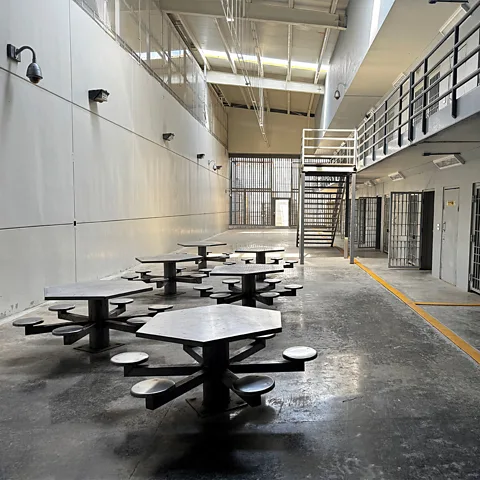Reports from former Islas Marías residents suggest that less well-known killings also took place on the islands. In 2004, an island chaplain named Francisco Ornelas wrote: “It is rumoured – and rumours are a profession here – that people who were disappeared are buried on the other three islands, which are now deserted but for the visits of illegal fishermen and drug traffickers.”
 Jamie Fullerton
Jamie FullertonAccess to the waters around Islas Marías was restricted after María Madre became a penal colony in 1905. Fishing was further limited in 2000 when the area was declared a bioreserve by Mexican authorities, ahead of Unesco’s declaration in 2010. In 2021, fishing restrictions were tightened again, with all commercial fishing without a permit from the navy banned in the area.
However, conservationists say that illegal fishing hasn’t been effectively cracked down on by authorities. Octavio Aburto-Oropeza, a marine conservationist and professor at Scripps Institute of Oceanography, echoed this when I spoke to him after the tour. “I know companies that offer not only recreational fishing [around Islas Marías], also spear fishing,” he said.
Aburto-Oropeza has dived the waters around Islas Marías on two separate trips, and says that while illegal fishing remains a concern, the reefs and wider marine ecosystem are in good shape, largely due to the archipelago’s isolation and low visitor numbers.
He believes that the navy and CONANP should do more to tackle illegal fishing and set tangible goals for reef and species restoration, but that responsible tourism could also help. “You can create a vision of tourism on the reefs with a certain capacity,” he said. “Touristic activities, especially diving, could help enforce conservation projects.”
I hope to return – perhaps to dive, or explore more land sites. A guide showed me photos of buildings that are currently off-limits, including derelict rooms filled with quirky octopus sculptures made by prisoners. In time these buildings might be certified safe to visit, she said.
On the ferry back to San Blas, I chatted to fellow passengers about parrots, torture boxes and the surreal experience of stepping into “Mexico’s Alcatraz”. Not one said the prison should re-open.